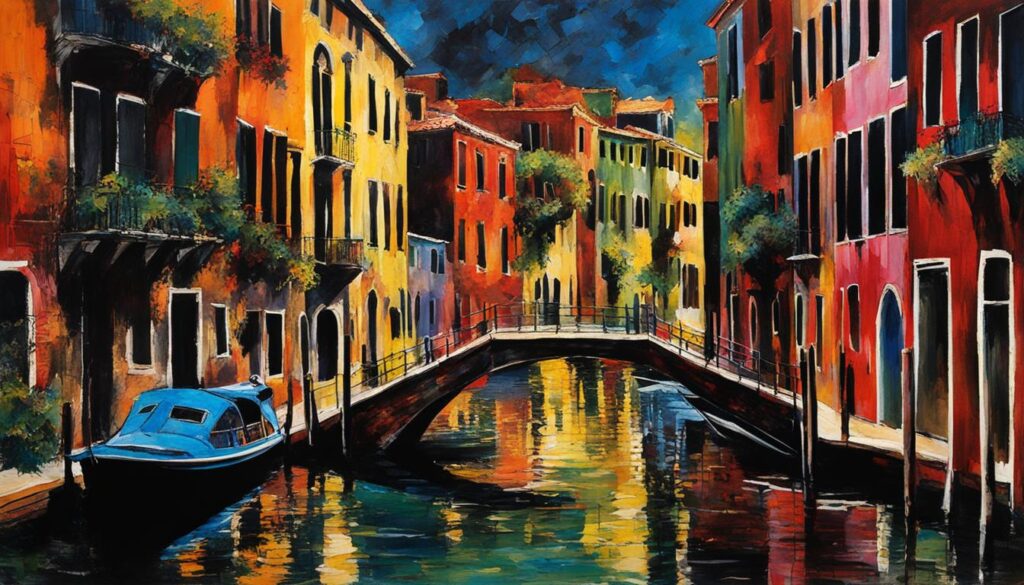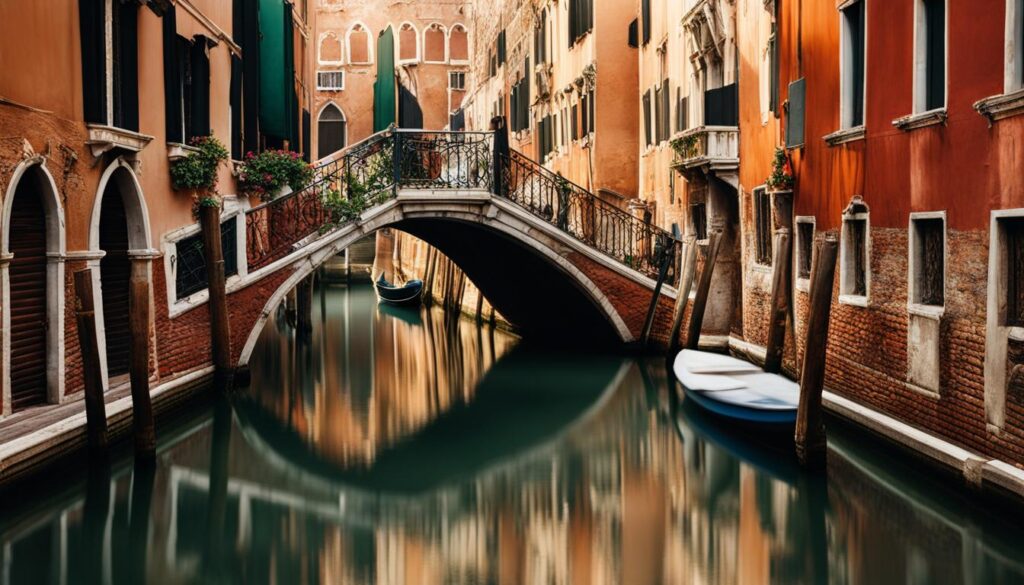Welcome to our audiobook review of “The City of Falling Angels” by John Berendt. This enthralling audiobook takes listeners on a captivating journey through the enchanting city of Venice, Italy. In this review, we’ll explore the plot, characters, themes, writing style, and audiobook performance, as well as the controversies and critical reception surrounding the book. Additionally, we’ll examine the cultural and historical significance of Venice and how it is intertwined with the narrative of “The City of Falling Angels.” So, sit back, relax, and join us on this fascinating exploration of Venice’s mysterious charm and rich history.
Introduction to “The City of Falling Angels”
“The City of Falling Angels” by John Berendt is an enthralling non-fiction work that takes readers on a journey to the captivating city of Venice. Set against the backdrop of this unique and intriguing city, the book explores the complicated personalities of its inhabitants, the city’s rich history, and its enchanting allure. In this audiobook review, we will delve into the world of “The City of Falling Angels” and examine its portrayal of Venice as a vibrant, yet mysterious and complex city.
Throughout the audiobook, Berendt’s captivating storytelling style and attention to detail bring the allure of Venice to life. From the grand canals and vibrant architecture to the complex characters that inhabit the city, Berendt’s vivid descriptions immerse listeners in the charm and mystery of Venice.
Join us as we explore the captivating backdrop of Venice, delve into the intriguing plot, meet the fascinating characters, and examine the underlying themes presented in “The City of Falling Angels.” Through this audiobook review, we hope to give readers a glimpse into the rich history and culture of Venice, as well as the artful storytelling of John Berendt.
Plot Summary
Discover the captivating storyline of “The City of Falling Angels” by John Berendt, a non-fiction account of the mysterious and enchanting city of Venice. The plot centers around the devastating fire that destroyed the Fenice Opera House, and the ensuing investigation into whether it was an accident or arson. As Berendt delves deeper into the city’s rich history and secrets, he uncovers a web of intrigue and hidden agendas that threaten to unravel the very fabric of Venetian society.
The book weaves together a cast of fascinating characters, from the wealthy and powerful to the colorful and eccentric, each with their own motivations and secrets. The author’s masterful storytelling and attention to detail bring Venice to life, from the stunning architecture to the murky canals that wind through the city.
As the investigation into the Fenice fire unfolds, Berendt uncovers a truth far more complex than he ever imagined, drawing connections to some of the city’s most iconic landmarks and unraveling a mystery that spans centuries. Through it all, the captivating backdrop of Venice sets the stage for a spellbinding tale of love, betrayal, and mystery that is not to be missed.
Characters in “The City of Falling Angels”
John Berendt masterfully brings to life a colorful cast of characters in “The City of Falling Angels,” each adding their unique flavor to the story set against the enchanting backdrop of Venice. From the eccentric Countess Marcello to the secretive art collector Dario Segre, every character is expertly woven into the intricate plot, creating a rich tapestry of human experience.
One of the most fascinating characters is the enigmatic Count Girolamo Marcello, whose family has lived in Venice for over 700 years. The Count’s immense wealth and influence make him a dominant figure in the city’s social scene, and his aristocratic charm and sharp wit draw Berendt and his readers in.
Another intriguing character is Berendt’s personal tour guide, Alessandra. With her insider knowledge and candid perspective, she exposes the reality of life in Venice and brings a grounded dimension to the story.
The characters in “The City of Falling Angels” are not just players in the story; they are the story. Each one adds depth and complexity, contributing to the overall allure of Venice and the intricacies of its culture and society. Berendt’s portrayal of these characters creates a vivid and immersive experience for the reader.
Setting: Venice’s Enchanting Allure
Amidst the winding canals and historic architecture, Venice plays an essential role in “The City of Falling Angels.” The ancient city’s charming personality and unique atmosphere bring each character to life, subtly shaping their personalities and enhancing their interactions.
John Berendt masterfully captures the city’s enchanting allure, leading the reader on a journey through the city’s dark alleys while providing a glimpse of its grandeur in palazzos such as the Palazzo Barbaro. The vivid descriptions of the city’s architecture, art, and cuisine enable listeners to immerse themselves completely in the narrative while creating a breathtaking backdrop for the story. As a result, Berendt’s vivid descriptions enable the listener to appreciate the magic of Venice alongside the enchanting storyline.
The Venetian Landscape in “The City of Falling Angels”
| Character | Venice’s Impact on the plot |
|---|---|
| Francesco da Mosto | Francesco provides essential context regarding the city’s history and grandeur. |
| Marina Fiorato | Marina’s passion for Venice drives her actions within the narrative. |
| Peggy Guggenheim | As the American heiress living in Venice, Peggy’s privileged life contrasts with that of other characters. |
The Venetian landscape’s impact on the plot is immense, as Berendt seamlessly weaves together the city and characters. Venice’s history and grandeur provide context and depth to the story while driving the characters’ actions in significant ways. Marina’s love for the city fuels her passion and drives her actions in the narrative, eventually leading to unintended consequences. Even Peggy’s privileged life is shaped by Venice’s unique history, leading us to question how the city’s unique atmosphere affects its inhabitants.
Themes Explored in “The City of Falling Angels”
John Berendt’s “The City of Falling Angels” delves into various themes that add depth to the story and create a thought-provoking narrative. One of the most prominent themes is the role of art and creativity in human life. Throughout the book, Berendt explores the creative process and how it affects individuals and society.
The concept of art and beauty is also prominently featured and examined in “The City of Falling Angels,” particularly in the context of Venice’s rich cultural heritage and history. Berendt seamlessly integrates the city’s art and architecture into the narrative, showcasing the importance of preserving the past while simultaneously embracing new artistic expressions.
Another significant theme in the book is the divide between social classes and the struggles of the working class. Berendt captures the stark contrast between the opulent palazzos and hotels of Venice’s elite and the impoverished living conditions of its working-class citizens. He provides a compelling commentary on the class divide and the economic and social issues that arise from it.
Furthermore, “The City of Falling Angels” explores the intricate nature of relationships and human connections. Berendt weaves multiple storylines together that showcase the complex dynamics between lovers, friends, and even strangers. Through his exploration of these relationships, Berendt highlights the importance of compassion and understanding in building meaningful connections.
Overall, the underlying themes presented in “The City of Falling Angels” add depth and meaning to the narrative, making it a captivating read that leaves a lasting impression on the reader.
Writing Style and Narrative Technique
John Berendt’s writing style in “The City of Falling Angels” is praised for its descriptive and vivid nature, aligning perfectly with the book’s mysterious and enchanting setting of Venice. His narrative technique is masterful, incorporating a blend of investigative journalist and storytelling to create a compelling and engaging read. Berendt’s ability to seamlessly weave historical facts and events into the narrative adds depth and richness to the story.
The use of first-person narrative allows the reader to feel a greater connection to the story and its characters. Berendt’s focus on character development is noteworthy, with each character having their own distinct voice and personality. His writing style is engaging, with a natural flow that keeps the reader fully immersed in the story.
Variety in Narrative Techniques
Berendt employs a variety of narrative techniques throughout the book, such as dialogue-heavy scenes and descriptive passages that paint a vivid picture of Venice’s beauty and decay. The use of multiple perspectives, including interviews with locals, adds depth to the story and furthers the sense of place. Berendt’s skillful use of these techniques creates an immersive and captivating reading experience that stays with the reader long after the book is finished.
Audiobook Performance
John Berendt’s “The City of Falling Angels” is intriguing not only in its storyline but also in its audiobook performance. The narration, by John McDonough, enhances the auditory experience of the listener, bringing the characters and setting to life with his expressive delivery.
McDonough’s tone and pace suit the book’s calm and introspective nature, allowing the audience to become fully immersed in the story. His vocal performance complements the book’s thoughtful and reflective narrative, adding a layer of depth to the listening experience.
One standout feature of the audiobook is McDonough’s flair for accents. He expertly navigates a range of voices, bringing each character to life with their unique nuances and dialects. This element adds to the richness of the audiobook performance, making the story more engaging and memorable.
“The City of Falling Angels” audiobook is a must-listen for fans of John Berendt and those enamored with the charm and intrigue of Venice.
Reception and Critical Acclaim
Since its publication, “The City of Falling Angels” by John Berendt has received widespread critical acclaim. Critics praise Berendt’s compelling storytelling and his ability to weave together a fascinating narrative set against the backdrop of Venice’s rich history and cultural significance.
The New York Times Book Review called it “a wonderful book, a fascinating saga that captures the passions of Venice… Berendt is a natural storyteller.”
The book was also a commercial success, spending over 20 weeks on The New York Times bestseller list.
The book’s reception has been largely positive, although some critics have raised concerns about the accuracy of certain events and characters in the book. Despite this, “The City of Falling Angels” remains a beloved work of narrative nonfiction that captures the essence of Venice and its unique charm.
Comparisons to Other Works by John Berendt

John Berendt is an accomplished author and “The City of Falling Angels” is just one of his notable works. Let’s compare this audiobook to some of his other well-known works.
“Midnight in the Garden of Good and Evil”
John Berendt’s “Midnight in the Garden of Good and Evil” is a non-fiction work that also takes place in a fascinating location: Savannah, Georgia. Like “The City of Falling Angels,” the focus is on the unique culture and eccentric characters of the area. However, while “Falling Angels” is a work of fiction, “Midnight” is a true-crime book that blends elements of mystery and suspense with a deep dive into the history and community of Savannah.
“The Bridge”
In “The Bridge,” John Berendt shifts his focus from the Southern United States to Northern Italy, where he delves into the rich history and controversy surrounding the Ponte Vecchio in Florence. Like “The City of Falling Angels,” this work combines investigative journalism with a personal touch as Berendt delves into the lives and motivations of the people involved in the bridge’s maintenance and renovation.
Impact and Legacy of “The City of Falling Angels”
Since its publication, “The City of Falling Angels” has had a profound impact on both the literary world and cultural landscape. John Berendt’s gripping narrative has captivated readers and listeners alike, drawing attention to the fascinating history and enigmatic charm of Venice. The book has garnered critical acclaim and has become a beloved classic of travel literature, showcasing the power of storytelling to inspire and transport readers to far-off lands.
Berendt’s unique perspective and immersive writing style have influenced countless writers and have paved the way for a new era of creative nonfiction. “The City of Falling Angels” has spawned a generation of travel writers who seek to capture the magic and mystery of new places, following in Berendt’s footsteps and building on his legacy. The book’s impact can also be seen in the numerous adaptations and translations it has undergone, reaching new audiences around the world and cementing its place in the literary canon.
Awards and Recognition
| Award | Year | Category |
|---|---|---|
| Book Sense Book of the Year Award | 2005 | Adult Nonfiction Book of the Year |
| Frank O’Connor International Short Story Award | 2006 | Short-listed |
| British Book Awards | 2006 | Nominated for Best Read of the Year |
| Independent Booksellers Prize | 2005 | Short-listed |
As the above table demonstrates, “The City of Falling Angels” has received widespread recognition and praise, solidifying its place as a seminal work of nonfiction literature with lasting cultural significance.
Controversies and Disputes Surrounding the Book
Despite its critical acclaim, “The City of Falling Angels” has not been without its controversies and disputes. One particular controversy arose when several of the key figures featured in the book came forward to dispute their portrayal. For example, the architect Massimiliano Fuksas criticized the book’s representation of his work on the Venice Port Authority building, which had been heavily criticized by Venetians. Similarly, the author’s portrayal of Venetian philanthropist Susanna Agnelli was criticized by her family members who felt that it was unfair and biased.
Another source of controversy was the book’s accuracy and use of composite characters. Some critics suggested that Berendt had taken liberties with the facts in order to create a more compelling narrative. In response, Berendt defended his methods, stating that he had used composite characters to protect the privacy of the individuals involved.
Despite these controversies, “The City of Falling Angels” remains a compelling and thought-provoking exploration of Venice’s unique allure and complex history.
Cultural and Historical Significance of Venice

Venice, a city built on water, has a rich history and cultural significance that has captivated the world for centuries. Venice was once a powerful city-state that stood at the center of a vast trade network stretching across Europe, Asia, and Africa.
Today, Venice remains an important cultural and historical center, drawing millions of visitors each year to experience the city’s stunning architecture, art, and music. From the canals and narrow streets to the iconic landmarks like St. Mark’s Basilica and the Doge’s Palace, Venice’s rich history is on full display throughout the city.
Perhaps one of the most famous cultural events held in Venice is the annual Carnival celebration, a traditional festival dating back to the 12th century. The Carnival of Venice is famous for its elaborate masks and costumes and is a celebration of the city’s history and cultural significance.
The Architecture of Venice
Venice is renowned for its unique architecture, which is a blend of Byzantine, Gothic, Renaissance, and Baroque styles. The city’s iconic buildings and landmarks are a testament to the city’s rich cultural heritage, and each tells a unique story of Venice’s past. From the grandeur of St. Mark’s Basilica to the intricate mosaics of the Palazzo Ducale, every building in Venice is a work of art.
The Art of Venice
The artistic heritage of Venice is equally impressive, with many of the city’s most famous buildings decorated with beautiful artwork. Some of the most famous Venetian artists include Titian, Veronese, and Tintoretto, who all worked during the Renaissance period. From intricate Byzantine mosaics to stunning Baroque frescoes, Venice’s artistic heritage is a source of great pride for the city and its people.
The Music of Venice
Venice has always had a vibrant musical culture, with many of the world’s most famous composers, including Vivaldi and Monteverdi, calling the city home. Today, visitors to Venice can enjoy a wide range of musical performances, including classical concerts, opera performances, and traditional folk music events.
Analysis and Interpretation of “The City of Falling Angels”
As a work of literary nonfiction, “The City of Falling Angels” by John Berendt provides ample opportunity for analysis and interpretation. The book defies easy categorization, blending elements of memoir, travelogue, and investigative journalism.
One notable aspect of the book is Berendt’s approach to storytelling. Rather than providing a straightforward narrative, he weaves together multiple storylines and perspectives, creating a tapestry of characters and events that reflect the complexities of Venetian life. The result is a rich, multi-layered portrait of a city and its people.
Another theme that emerges throughout the book is the tenuousness of Venetian culture and history. Berendt explores the city’s long tradition of art, music, and architecture, as well as its darker history of corruption and scandal. His careful attention to detail and willingness to delve into uncomfortable truths add depth and nuance to the narrative.
At its core, “The City of Falling Angels” can be seen as a meditation on the nature of beauty and decay. Berendt captures the fleeting, ephemeral nature of Venice’s beauty, highlighting the ways in which the city is always in a state of flux and transformation. At the same time, he acknowledges the darker underbelly of Venetian life, showing how corruption and decay threaten the city’s very existence.
Overall, “The City of Falling Angels” is a rich and complex work that rewards careful analysis and interpretation. Through his masterful storytelling and keen eye for detail, Berendt creates a vivid portrait of one of the world’s most enchanting cities and its people.
Conclusion
Overall, “The City of Falling Angels” by John Berendt is a captivating audiobook that takes listeners on a journey to the enchanting city of Venice. Berendt’s masterful storytelling and vivid descriptions of the city’s rich history and mysterious charm make for a truly enthralling experience.
The audiobook offers a unique perspective on Venice, providing insights into its culture, history, and the controversies and disputes that surround it. Berendt’s writing style and narrative technique add to the overall allure of the story, making it a must-listen for anyone interested in the city’s cultural and historical significance.
“The City of Falling Angels” has received critical acclaim since its publication, and its impact and legacy continue to resonate in the literary and cultural landscape. Whether you’re a fan of John Berendt’s work or simply looking for a mesmerizing audiobook experience, “The City of Falling Angels” is sure to delight and intrigue.



